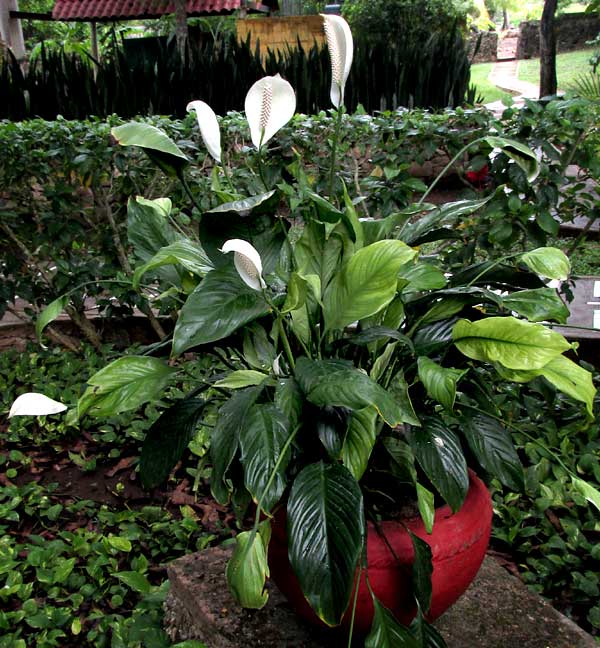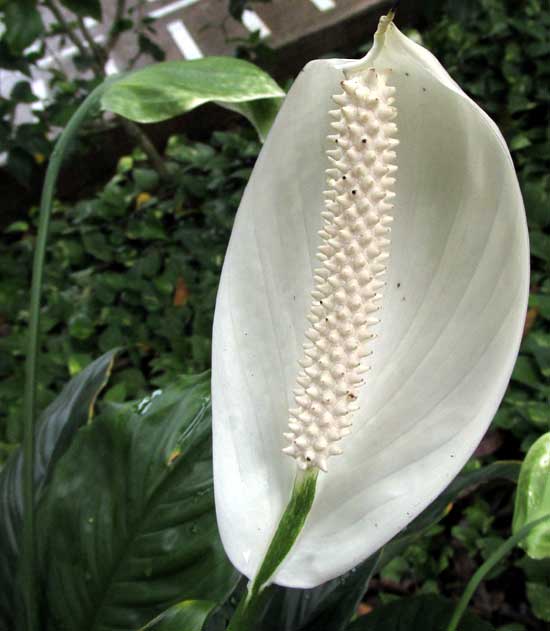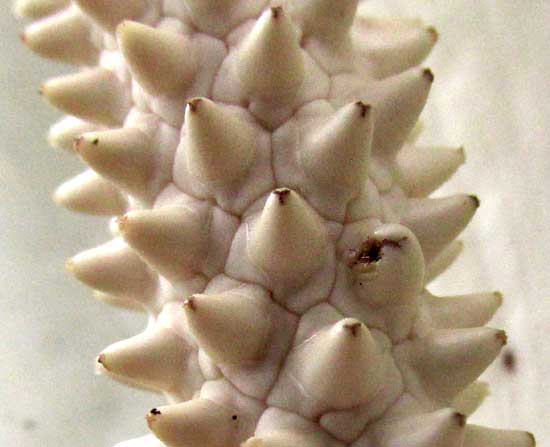Excerpts from Jim Conrad's
Naturalist Newsletter
from the June 26, 2016 Newsletter issued from Hacienda Chichen Resort beside Chichén Itzá Ruins; limestone bedrock; elevation ~39m (~128ft), N20.675°, W88.569°; central Yucatán state, MÉXICO
PEACE LILIES

Throughout the Hacienda grounds plantings and potted plants contribute to the general pretty environment, and nowadays one of the most spectacular potted plants is the one shown above.
In English such plants are known generally as Peace Lilies, though they're not members of the Lily Family at all, but rather the Arum or Jack-in-the-pulpit Family, the Araceae. The proof of that is the quintessential Arum-Family flowering structure shown close-up below:

In this family, tiny flowers are closely clustered in a spike-type flowering head, called a "spadix," and the spadix is associated with a modified leaf, a "spathe," which sometimes is colorful and often at least partially wraps around the spadix. In many species, unisexual male and female flowers are separated on different parts of the spadix, but in this one each flower bears both male and female parts. A close-up look at the spadix's bumpy surface is shown below:

Pollination has already taken place here, the male stamens have fallen off, and the pistils are maturing into crammed-together fruits.
Peace Lilies belong to the genus SPATHIPHYLLUM, but beyond that, if you have a potted plant, it's hard to say which Spathiphyllum you have. On the "Spathiphyllum Cultivars" page at FloriData.Com, it's said that "Peace lilies have been hybridized and back-hybridized until it is no longer known for certain which species are parents of which cultivars. Probably most cultivars have Spathiphyllum wallisii somewhere in their parentage." Spathiphyllum wallisii is native to Central America.
Beyond that about all we can say is that big clay pots of healthy Peace Lilies are very attractive when left here and there in a large garden environment, and with our rainy season beginning, nowadays they seem to be doing especially well.